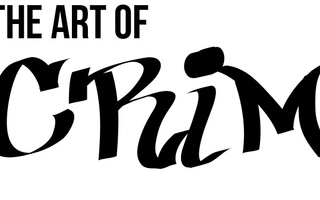{shortcode-3d7a311b2d75a259d407fec18ad1875211901760}
“Hello everybody!” chirps Zoe Sugg in her light Wiltshire accent. She’s sitting in front of a Canon DSLR on a tripod, professional lighting equipment illuminating her meticulously-applied red lipstick and neatly styled blonde hair. “Today I’m going to be doing something that I love doing, that you all request quite a fair bit, which I haven’t done in quite a while. That’s a Q&A.”
Sugg, 26, proceeds to answer questions submitted via social media about her experiences and opinions. She’ll edit the footage with Final Cut Pro, then upload the video to an audience of 11 million. This video will attract 2.2 million views.
YouTube stars like Sugg (known as “Zoella” on YouTube) constitute a particular brand of celebrity culture, one that straddles the line between celebrity and citizen. They’re famous, yet accessible. Most of them come from middle-class backgrounds, in touch with quotidian anxieties like buying groceries, taking out the trash, and walking the dog—yet they get recognized in public, routinely feature in magazines like Vogue and Seventeen, and market their own brands of merchandise.
YouTube stars don’t just advertise cosmetics and clothing; they commodify their own personal lives. In “daily vlogs,” they edit documentary-style footage into cutesy montages, manufacturing one picture-perfect day after another. There’s no detail too personal to publish. The Internet is privy to their friendships and romantic relationships, the interiors of their childhood houses, and what they eat for any given meal. It’s symbiotic voyeurism: The stars reap the benefits of heightened exposure, and viewers, the majority aged between 13 and 24, get to vicariously experience what it’s like to be a grown-up with virtually no consequences.
Naturally, that’s exciting and satisfying to watch. Their videos present adulthood through an Instagram filter: Mornings begin with fruit yogurt parfaits, a wardrobe of designer clothes, and a vanity replete with high-end makeup. Average days include strolls on the pier, shopping trips, photo shoots, and drinking hot chocolate out of Mason jars, and finally conclude with sunsets and movie nights with friends. Everyone here is beautiful, white, and thin. No, it’s not a realistic portrayal of adult life: It’s better.
If there’s any merit to justify frittering away the hours on frivolous content, it takes the form of promoting social issues. Sugg has advocated for mental health awareness and treatment. Beauty blogger Tanya Burr, with a following of over 3.6 million, documented her trip to New York City to speak at the United Nations about her Global Goals campaign, focused on publicizing the UN’s 17 sustainable development goals. And in one of her vlogs, Niomi Smart talked at length about the Aleppo humanitarian crisis. They command massive platforms—at least they occasionally use them to enact social change among impressionable audiences.
Arguably, though, it’s easy for YouTubers—twenty- and thirty-somethings—to forget just how impressionable their audiences are. Their version of adulthood is glamorous, yes, but also glamorized. There’s a mentality surrounding YouTube stars, and celebrity culture in general, that these lifestyles are somehow ideal lives worthy of aspiration. “You’re #goals,” viewers comment. It’s important (especially for younger viewers) to recognize that vlogs, despite how they’re presented, aren’t reality. They’re carefully curated, filtered, edited versions of the truth.
That’s not to say that YouTube stars, like all celebrities, are placed under the magnifying glass. With a spotlight that bright, their mistakes are on full display alongside their triumphs—everything from allegedly ghost-written novels to homophobic slurs—sometimes, as a self-incriminating result of their own documentation.
At the conclusion of the Q&A video, Sugg addresses an inquiry submitted via Twitter: Is being a YouTuber sometimes hard?
“Just like with everything else, you’re going to have your down days, and you’re going to have your up days,” she says. “The difference is everyone is going to know about them.”
—Staff writer Caroline A. Tsai can be reached at caroline.tsai@thecrimson.com. Follow her on Twitter @carolinetsai3.Read more in Arts
‘American Horror Story: Cult’: A Monster Without TeethRecommended Articles
-
Blogging the Ivy League’s FolliesOne weekend in October, we ruined a kid’s life. We didn’t mean to. Well, more like we didn’t expect to.
-
Ex-Guise and VideotapeRemember those Christmas Eves spent in the monochrome glow of ABC’s airing of the Capra classic “It’s A Wonderful Life,”
-
Driving Senator McCainCORRECTION APPENDED Last New Year’s Eve, Steven E. Johnston ’09 was on the trail with John McCain’s campaign, driving a
-
Videos and "Harvard Bros"Kirkland resident Abel Acuña '11 and Pforzheimer's Johnathan M. Brugal '10 may be stealing some of the limelight from Harvard
-
 The Gangs of YouTube
The Gangs of YouTube













